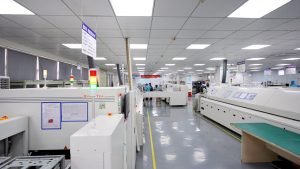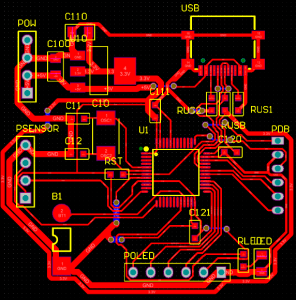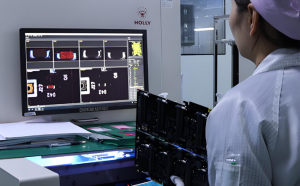A circuit board is an independent part of modern electronic devices, equipped with various components that play different roles and functions on the board such as connecting, signal transmission, power distribution, and signal conversion. Theoretically speaking, electronic components are the fundamental units in the devices, and printed circuit board (PCB) serves as a carrier for mounting components, connecting them to completing the functions of electronic systems. Here, we will introduce some common circuit board components and their functions.

What Are Electronic Components?
Electronic components are fundamental building blocks used in the construction of electronic circuits and systems. These components manipulate electrical signals to perform specific functions in electronic devices. Based on their purpose and functionality, electronic components can be categorized into two major types: passive components and active components.
Passive electronic components mainly include resistors, capacitors, inductors, power filters, and so on. They do not have active operational functions such as amplification or signal control. Instead, passive components can only consume or store electrical energy. In electronic systems, their main roles include signal transmission, distribution, filtering, isolation, and other similar functions.
Active electronic components, on the other hand, include transistors, field-effect transistors (FETs), integrated circuits (ICs). Unlike passive components, active components have the ability to actively amplify, control, and manipulate signals related to current, voltage, frequency, and more. They play a crucial role in electronic systems, enabling active operations and functionalities.
What Is the Functionality of Common Components on PCB?
On an assembled circuit board (PCBA), we can see various of components on its surface. Different components play its unique role and have different function. Here we will introduce the function of common components.
- Resistor
A resistor is a component used to restrict the flow of electric current. Its purpose is to control the magnitude of current by adjusting its resistance value, ensuring appropriate current adjustment within the circuit.
- Capacitor
The capacitor has the ability to store charge and release it when needed. Its function is to smooth power supply voltage, stabilize current, and in some cases, perform signal filtering to accomplish signal conditioning. Resistors and capacitors are two common types of electronic components.
- Diode
Diode is a type of component with unidirectional conductivity. The uses of diode enable to allow current to flow in one direction while blocking reverse current. It is commonly used in power supplies, rectifiers, and other circuits.
- Transistor
A transistor functions in amplification and switching in a printed circuit board. Its role is to amplify electronic signals, control the flow of current, and it is widely used in circuits such as amplifiers and logic gates.
- Integrated Circuit (IC)
Integrated circuit is a very important components in those small size circuits, because it can integrate multiple functional circuits onto a single chip. That means it can save space if your design has limited space, enhance system performance and reliability of devices. Integrated circuits find widespread applications in areas such as computers, communication systems, and embedded systems.
- Inductor
The working principle of inductor is similar to a capacitor, but the different is an inductor has the ability to store and release energy while capacitor is to store and release charge. Its main function is to accomplish energy conversion and distribution in a circuit. Inductors are commonly used in circuits for filtering, power supplies, and more.
- Variable Resistor
A variable resistor allows for the adjustment of resistance and it always used for modifying circuit characteristics by changing the resistance value. Variable resistors are commonly used in circuits for functions like volume control, light intensity adjustment and some other devices that need to adjust the resistance.
- Light Emitting Diode (LED)
LED chips is a component that we can see everywhere need to light up. It converts electrical energy into light energy. Its function includes emitting light for indicators, illumination, and it is widely used in circuits such as display screens and indicator lights.
- Power Module
Power module is always designed to provide the electrical energy required by a circuit. Using power to stabilize output voltage and current, protecting the circuit from external power fluctuations.
- Sensor
A sensor can perceive physical quantities or signals in the surrounding environment and convert them into electrical signals. Its function is to enable interaction between the circuit and the external environment. Sensors find wide applications in areas such as automatic control, the Internet of Things (IoT), and more.
In summary, the various components on a circuit board have their specific roles, work in conjunction with each other, and collectively achieve the functionality and objectives of the circuit. Understanding the functions of these components allows for a better grasp of the working principles of circuit boards, providing reference and guidance for the design and maintenance of electronic products.
However, for some reasons, inspect the components before PCB assembly is the main method that ensures the reliability of a PCBA. In our next post, we will share how to make the incoming inspection for electronic components, leave your messages if you are interested in it.









